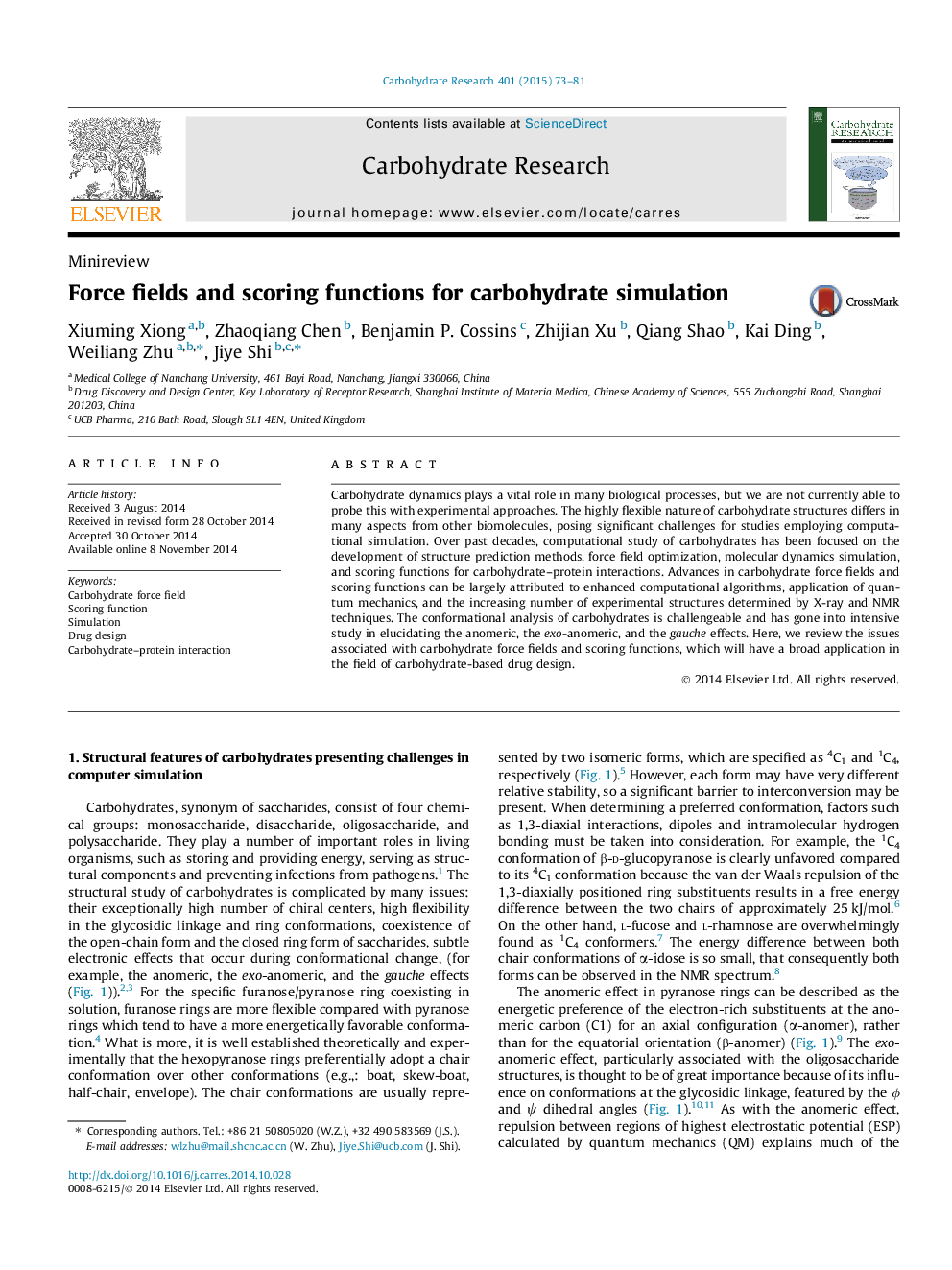| Article ID | Journal | Published Year | Pages | File Type |
|---|---|---|---|---|
| 1388472 | Carbohydrate Research | 2015 | 9 Pages |
•Major carbohydrate force fields have been applied to a larger biological context.•Methods are being developed to address both spatial and temporal properties.•The introduction of electronic polarizability into force fields is highly desirable.•Water-mediated hydrogen bonds present a challenge in carbohydrate–protein docking.
Carbohydrate dynamics plays a vital role in many biological processes, but we are not currently able to probe this with experimental approaches. The highly flexible nature of carbohydrate structures differs in many aspects from other biomolecules, posing significant challenges for studies employing computational simulation. Over past decades, computational study of carbohydrates has been focused on the development of structure prediction methods, force field optimization, molecular dynamics simulation, and scoring functions for carbohydrate–protein interactions. Advances in carbohydrate force fields and scoring functions can be largely attributed to enhanced computational algorithms, application of quantum mechanics, and the increasing number of experimental structures determined by X-ray and NMR techniques. The conformational analysis of carbohydrates is challengeable and has gone into intensive study in elucidating the anomeric, the exo-anomeric, and the gauche effects. Here, we review the issues associated with carbohydrate force fields and scoring functions, which will have a broad application in the field of carbohydrate-based drug design.
Graphical abstractFigure optionsDownload full-size imageDownload as PowerPoint slide
